Teton to Tongass: How I Spent a Summer Searching for Bears
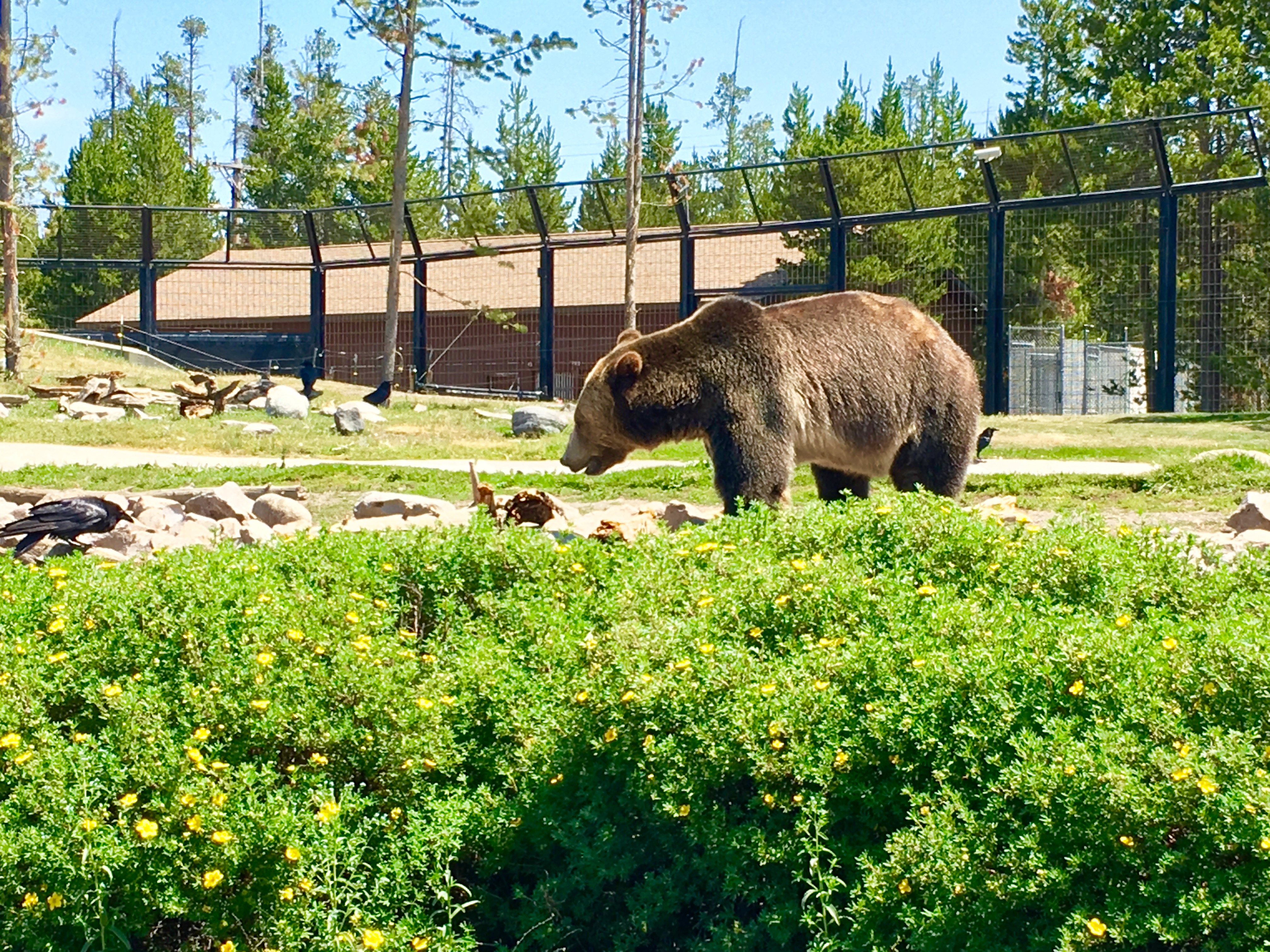
Author’s note: I am an animal lover and lifelong vegetarian. My hopes of seeing a bear in America’s wilderness are purely fueled by my fascination and love for seeing animals in the wild. All proper safety precautions were taken, and no entity was harmed in the process, unless you count my friends and family whom I bored with my talk of bears.
With my spray-can in hand, I trudged cautiously along the overgrown path, speaking just softly enough to pick up on any rustling movements in the shrubs surrounding us, but with enough volume so as to not catch any creature concealed in its depths unaware.
Treading over the sinuous tree roots and now stepping out into the clearing of the small lake, I pored over its surroundings — at its shallow, boggy edges and the steep, flowered hillside, eager to catch a dark, hunched figure in its midst.
This was the summer I spent searching for bears.
Looking for wildlife has always been a rush for me. In my youth, my family took me to the jungles of India, recounting their tales of sighting tigers, snakes, panthers and pachyderms.
I was hooked.
With the Tempo Traveller’s windows rolled down and binoculars pressed against my face, I would peer out in earnest, scouting for wild elephants, peacock, gaur, and of course, leopards and tigers. Over the years, we saw hundreds of deer, scores of peacocks and monkeys, and a handful of wild gaur, mongooses and wild elephants — but never the big cats I desperately longed to see.
Aware of Bears
Into adulthood, as trips to India grew shorter and less frequent, I realized that I didn’t have to wait to travel to the other side of the world to pursue wildlife. As I hiked the woods of north Georgia and Tennessee, I kept my eye out for black bears. Having never seen one, I would scowl in hearing of others’ bear sightings.
That’s why this year, when we planned two trips to the American northwest, I researched where to find grizzlies; my black bear interest had suddenly waned at the prospect of viewing these much larger omnivores in Wyoming and Alaska.
I’m typically a risk-averse person, but when it comes to seeing an apex predator in the wild, I’m simply riveted to the point of neurosis. This dawned on me when the lady who sold me bear spray in Yellowstone’s Canyon Village looked concerned as I asked her on which trails I had the highest chance of encountering a grizzly:
“Honey, trust me, you don’t want to come across a grizzly on your trail.”
But I did.
So first, in Grand Teton National Park, after asking the staff at our lodge where bears were last seen, we headed to the Taggart Lake Trail, a short and scenic trail where she said black bears were just discovered hours prior.
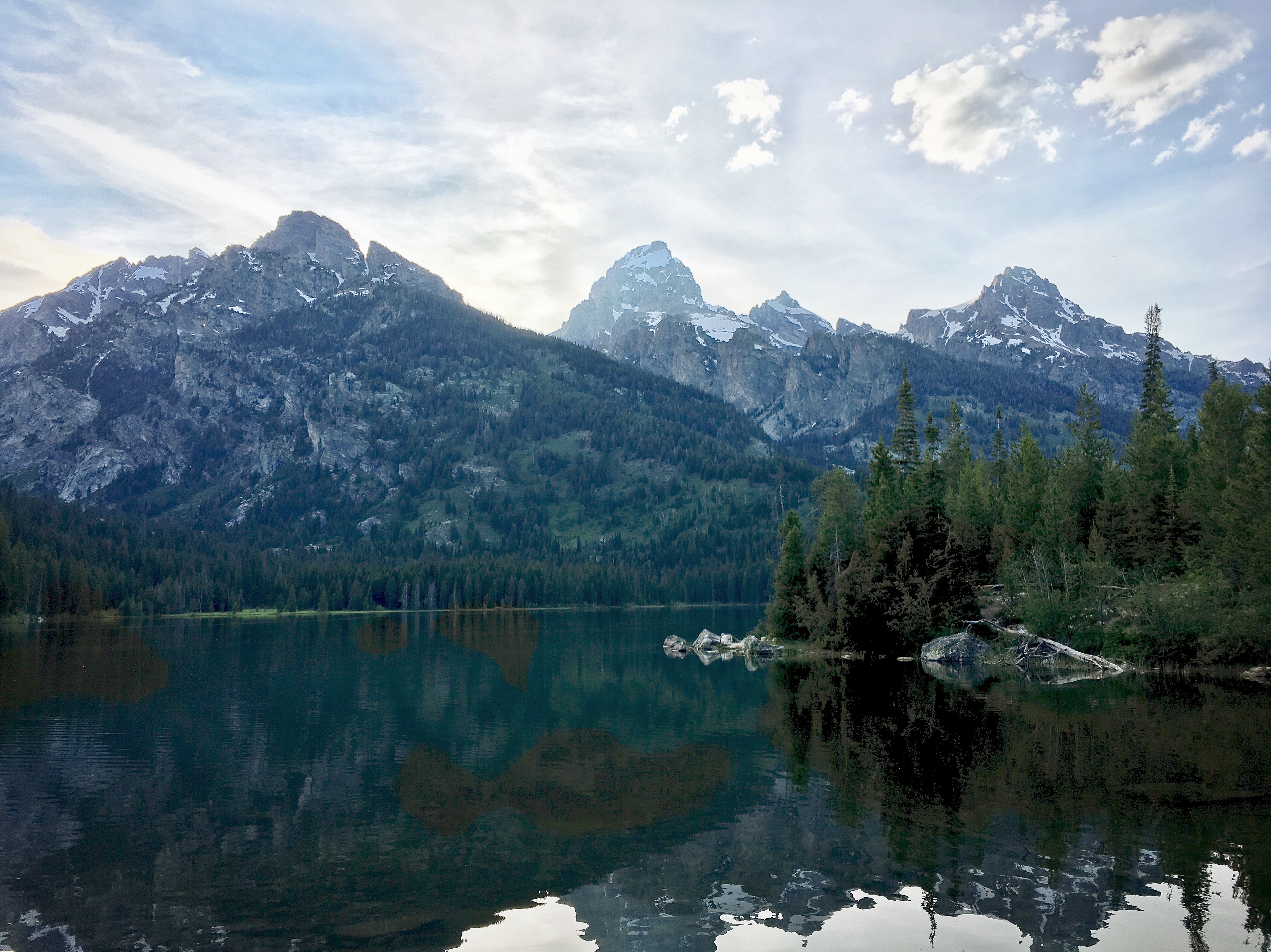
“BE BEAR AWARE” the signs at the trailhead read, warning hikers to keep food stored properly and to carry bear spray. But beyond the bear-print boxers peeking out from one hiker’s trousers, there were no bears to be seen. Still, the trail left us spellbound, as the reflection of the Tetons off of the glassy water instilled a sense of serenity and awe at once.
We could not stop staring, but the mosquitoes eventually chased us away.
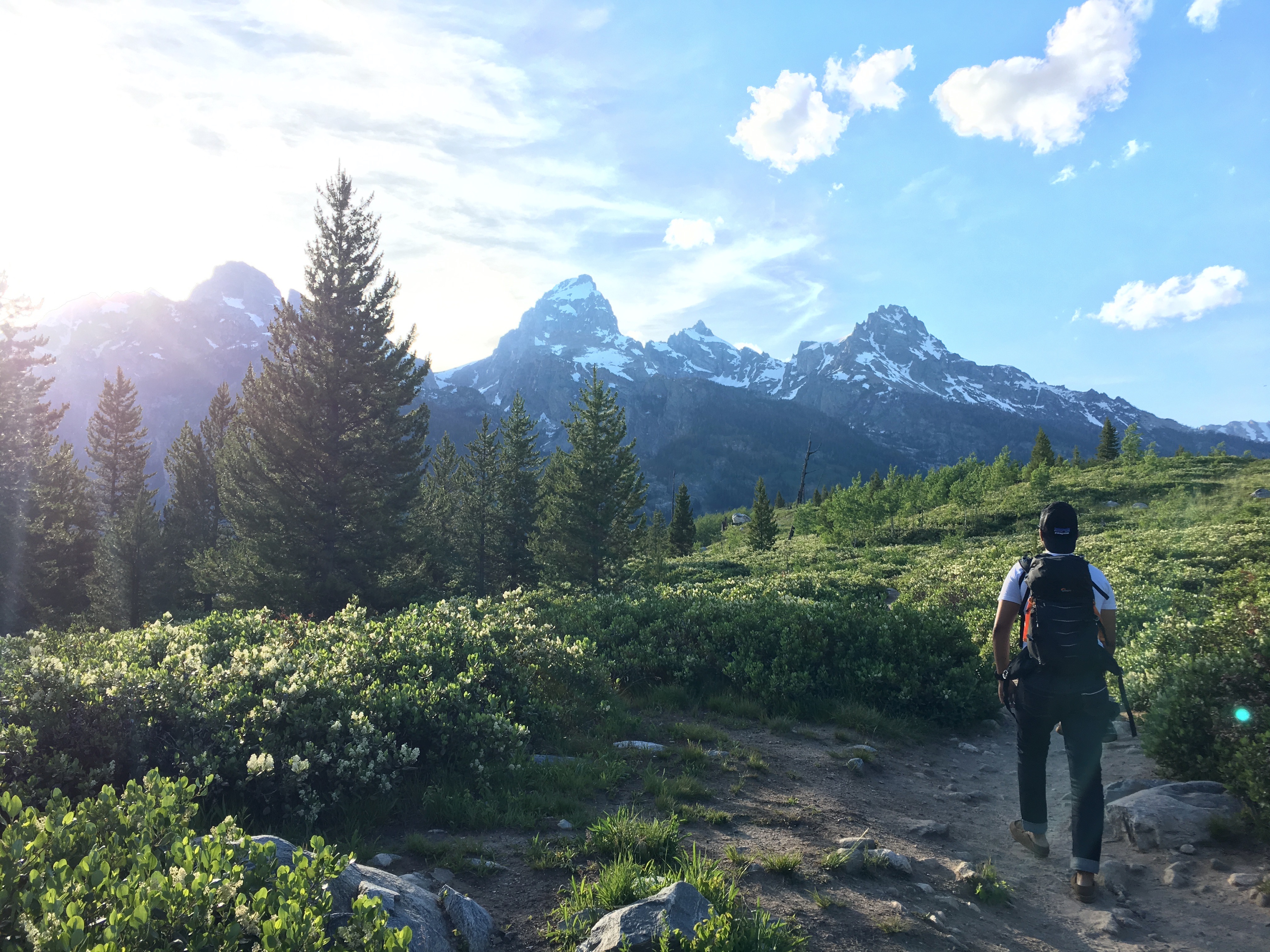
Next, in Yellowstone National Park, near the Old Faithful Inn where we were staying, we heard rumors that a grizzly sow and her cubs had been spotted. I was further encouraged by paw prints and scat that I had detected along the winding wooden platforms that skirted the steaming geysers.
The next morning, we awoke early, before the blush of dawn could stain the skies. My heart raced at the slightest movements, only to sink again in finding a squirrel as its source. I started to curse at the sight of coyotes. Perhaps we needed to venture further into the trees, away from the wooden geyser basin platforms, so we walked the Observation Point Trail, eyes peeled for that distinguishing hump of a brown bear…

We came across marmots instead. (If, like me, you didn’t know what a marmot was, trust me, you don’t need to. They’re entirely unimpressive).
Finally, on our last full day in Yellowstone, now rabid to catch a glimpse of this predator in the wild, I jostled my group up even earlier to drive through Hayden Valley on to Lamar, just as the meadows would start to stir at the first flush of light.

Here, I had read, an abundance of wildlife thrived, feeding in the valley at different times of the day.
During most of the drive to the valley, our visibility was limited in the crepuscular light, so I pointed my flashlight into the woods, hoping to catch gleaming orbs staring back at us among the trees.
Every ashen log resembled a bristled back, every shadow, a sauntering cub.
Lamar Valley did not disappoint. The valley was indeed, swarming with animals such as bison, elk, birds and deer. Herds upon herds of bison grazed torpidly on either of the side of road, their calves romping blithely in the fields of wildflowers.

Surely, I thought, somewhere here in the midst of all this life, we may catch the brooding figure of grizzly ambling into the valley for its food or hunched over a carcass.

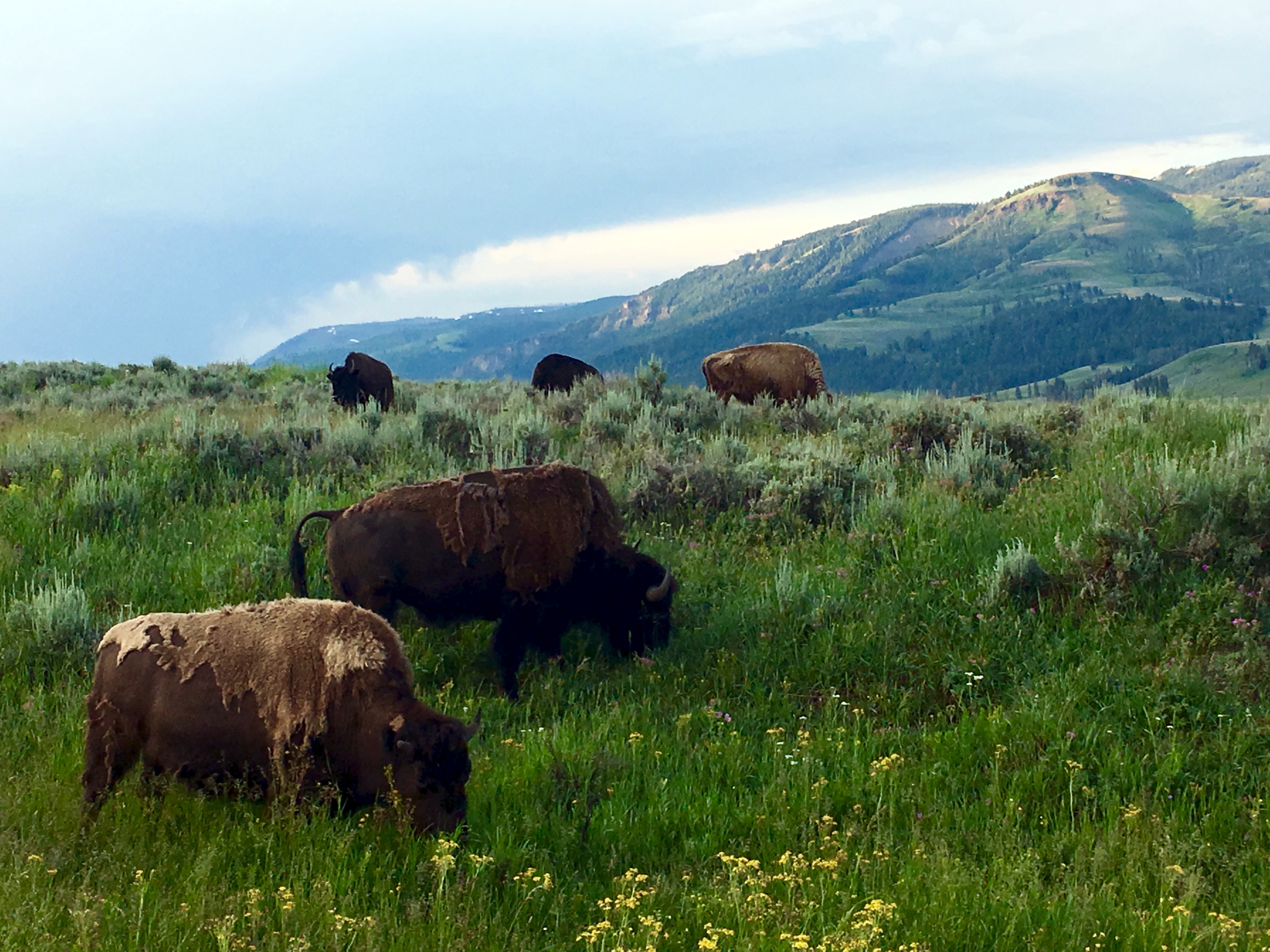
But the drive bore no bear sightings.
It was time to explore on foot.
Bear spray in hand, we walked the short Trout Lake Trail, which, aside from an unexpected encounter with a bull bison crossing our path, proved motionless — yet picturesque. I’ll admit however, that at this point, I had become cognizant of my now brazen quest to find a grizzly, and to compensate, I started to sing as we walked along the tall grass, lest we run into a surprised bear on the trail.
Still…nothing.
Through the lens
By this time, my hopes had dissipated. Bitter, I clambered back into our Chevy Tahoe, almost disregarding the handful of people stationed with telescopes along the road that twisted through Lamar Valley. I had seen enough people camped out with lenses the last few days to know that most of the time, they were just zooming in to view herds of bison or waiting at dusk for wolf packs. Finally, my curiosity and final vestige of faith compelled me to stop and ask. What were they so intently looking at?!
Grizzlies.

Up, on a hilltop, miles away and hundreds of yards up high, was a male grizzly, who had apparently scared off a sow and her two cubs. One of the viewers allowed me to look through his lens and, if I squinted just a bit, I could see was a small blob of brownish black on the hillside that I could make out as a bear: there it was, feeding, head lowered and digging into roots, the marked hump of its shoulder blades jutting above its form!
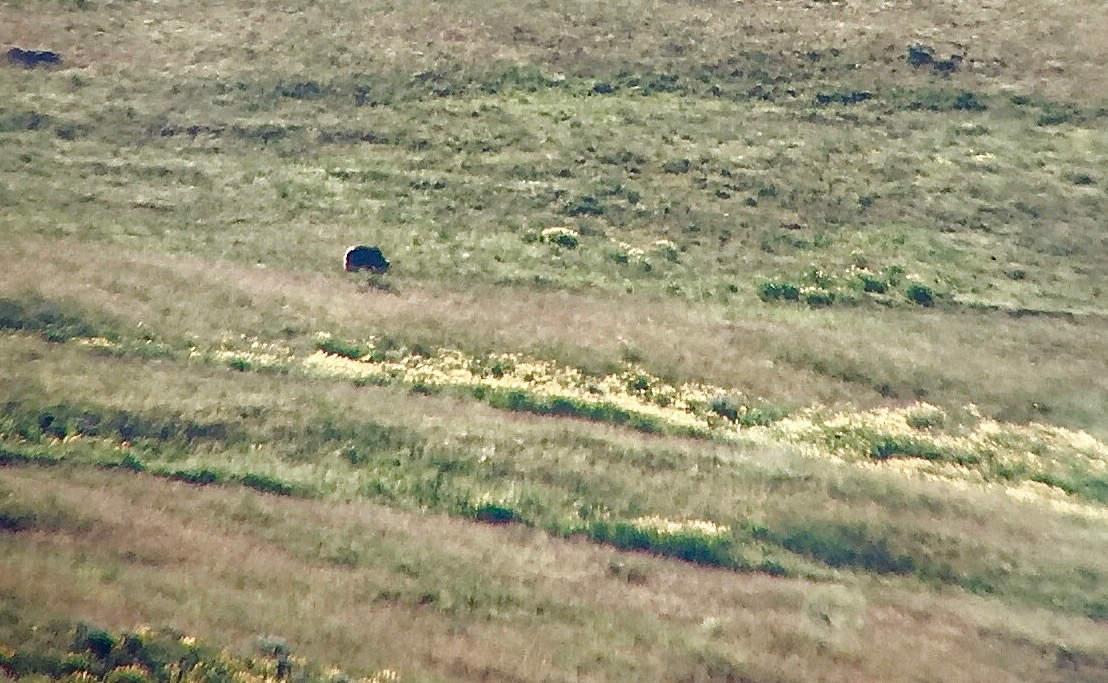
Finally.
This sighting was enough for me to feel that I had seen a grizzly in Yellowstone, but not entirely enough to satiate my bear fixation. Thankfully, and to the relief of my husband and friends, who had become weary of my inexhaustible hunger to see bears, an hour later we came across a black bear that caused a wildlife jam in the park.
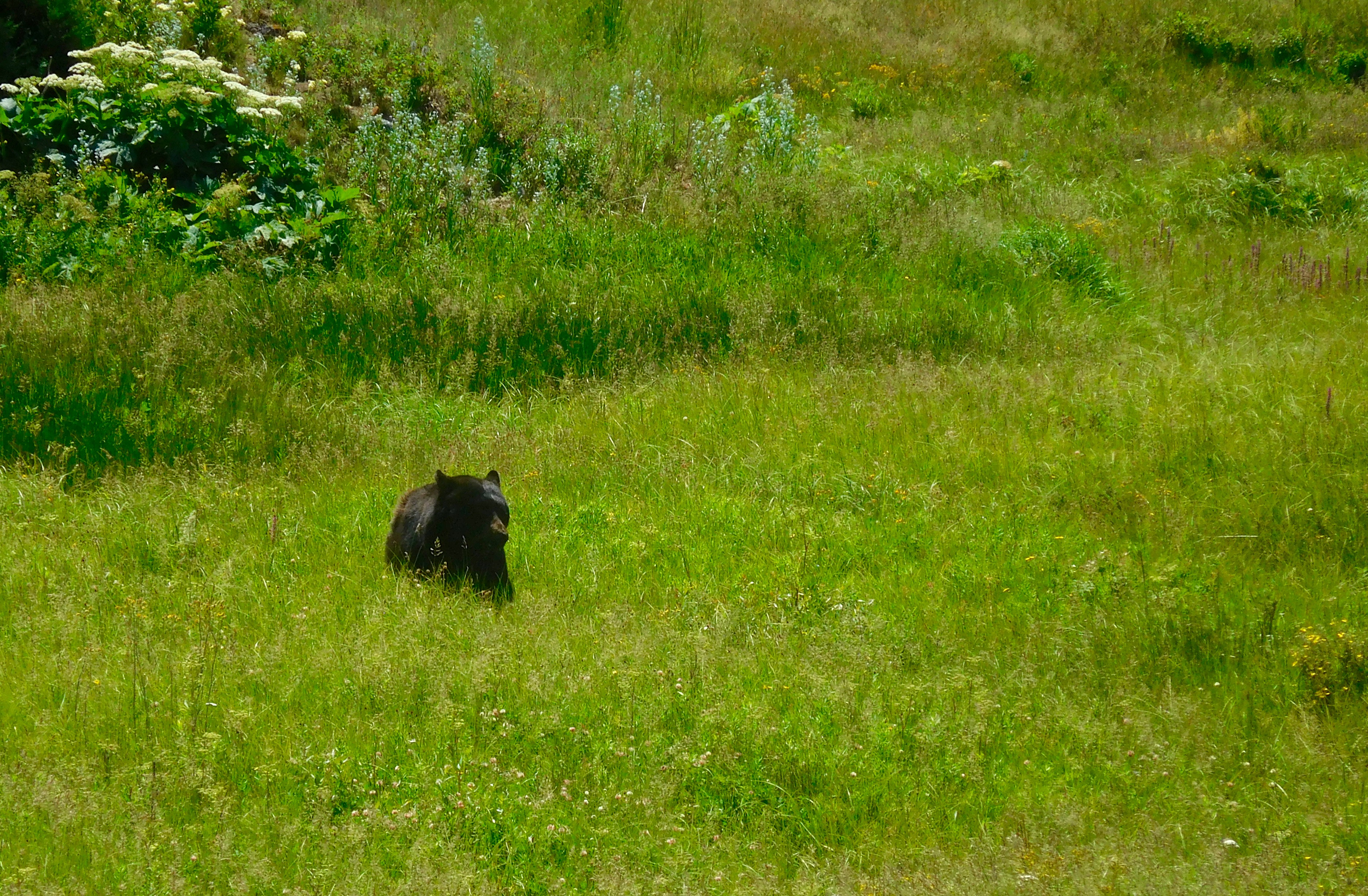
Having viewed him from within 40-50 yards and having snapped a few photos, I was temporarily satisfied until my next trip out west, to Alaska…
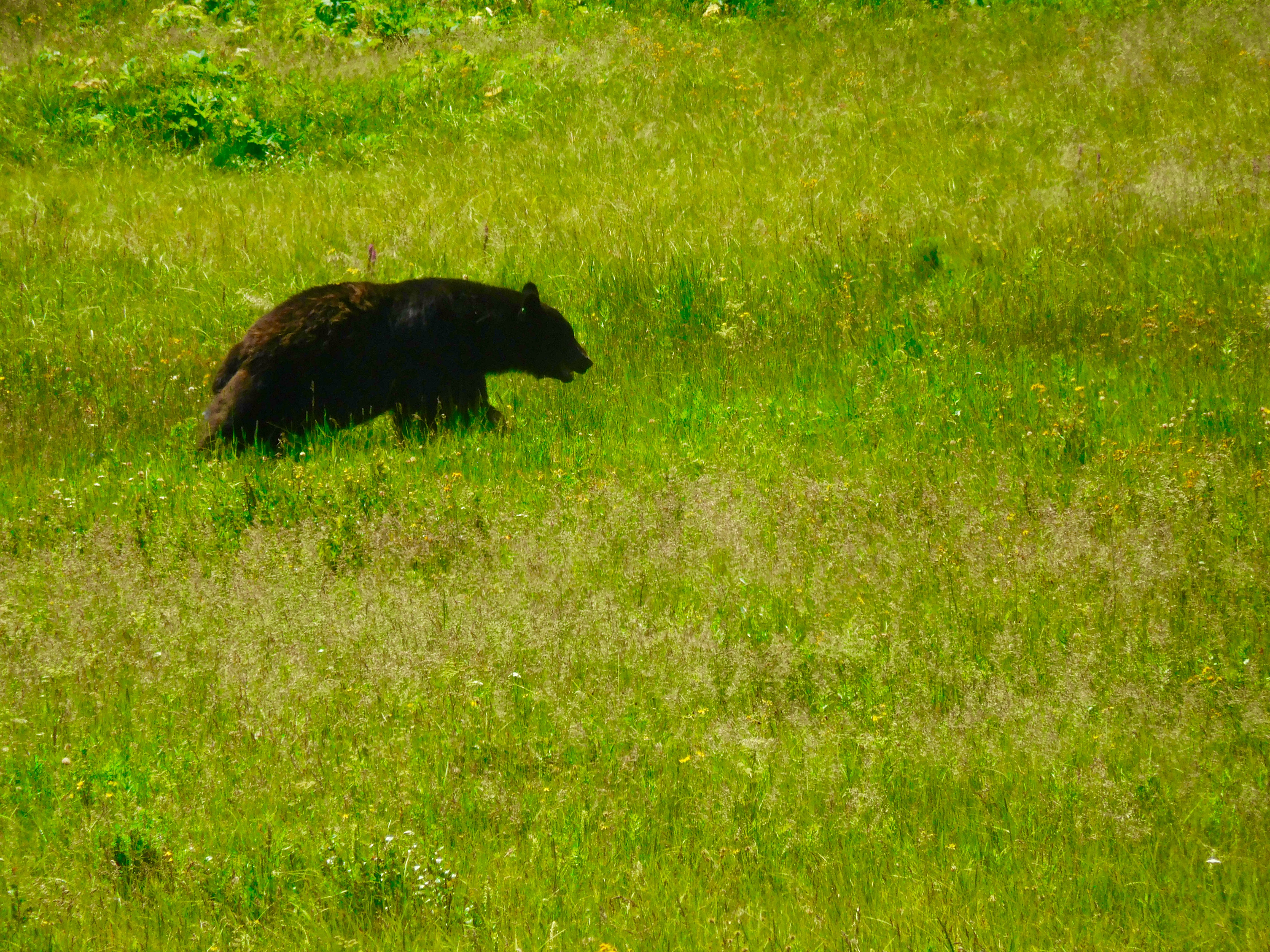
So you want to see bears?
Obviously, I can’t make any promises, but I can share with you what I learned from reading about bears, trails, and my copy of Kathleen Snow’s “Taken by Bear in Yellowstone: More Than a Century of Harrowing Encounters Between Grizzlies and Humans.” The most profound — albeit, disappointing — lesson learned from reading this book is that in most cases when bears have attacked humans, there are at least two victims — both the human who was attacked, and the bear, who is most often caught and euthanized or caught and caged. Further, if it is a sow who is euthanized, her cubs are placed in captivity at places such as the Grizzly and Wolf Discovery Center, as cubs are unlikely to survive in the wild without their mothers, or back in the wild after having lived in captivity. In some cases, proper precautions were not taken as hikers ventured through bear country.
It’s disheartening to know that these bears and their cubs end up as casualties as a result of a bear simply behaving as it would — either because it was scared or defensive of food or young.
Instead, we need to accept this as a risk we take when we step into natural landscapes where wildlife thrives.
The best way to avoid negative encounters when exploring through bear country, regardless of your intentions, is to take the appropriate safety precautions to protect both yourself and the bears.
Bare necessities
Before you go looking for them, remember that these are wild, omnivorous animals, and while bear attacks are rare, they can and do happen occasionally, particularly if the animals feel threatened or surprised. Here are the bare necessities of traveling through bear country.
- Store food properly and out of reach. One of the key reasons bears come across humans is because they can smell human food, and attacks happen because the bears have started to associate humans with food.
- Dispose of trash. They can smell you well before they hear you, but still…
- Make noise. Bears are usually minding their own business, but don’t like to be surprised, so hike in groups and make noise as you walk. I know we feel compelled to be quiet so as to not disturb wildlife when we are out in the wilderness, but when it comes to bears, chattering away is encouraged. You don’t want to surprise a bear.
- Avoid hiking alone or at night. Most bear attacks have happened when bears have come across a single hiker or two at most, so it’s best to travel in groups.
- Follow park trails, guidelines, and be aware of signage and conditions. Certain places or activities require permits for good reason, and some parks have designated bear management areas during particular seasons, so heed park warnings.
- Carry bear spray and know how to use it. This can be purchased, or rented for about $9 a day in the parks. You likely won’t be able to carry it back with you on an airplane if purchased, so I rented mine for a the day that we explored Lamar Valley.
If you encounter a bear:
- Stay at least 100 yards away (roughly a football field)
- Don’t climb a tree if you are chased or attacked. Both black and grizzly bears can climb trees.
- Black bear? Stand your ground, make noise, make yourself taller, and if charged, use bear spray. Remember: If attacked, fight back.
- Grizzly bear? Don’t run. Use bear spray if charged and, if attacked, think: “Brown, lay down”—play dead with your pack still on and cover your neck with your hands. Pray.
Where to see bears
With those safety tips in mind, here are some places, based on trail guides I read, where bears have commonly been seen. I didn’t follow my own advice here with these trails and tours, but I don’t regret a single moment of my trips this summer, because I still encountered countless wildlife in proximity and experienced several breathtaking views.
Places you could see bears in Teton (based on trail guides)
- Taggart Lake Trail
- Grand View Point
- Two Ocean Lake Loop
- Death Canyon Patrol Cabin
- Moose-Wilson road and on Signal Mountain (according Mike Jackson’s “Best of the Tetons”)
- Mt. Leidy and in areas around Towgotee Pass (according Mike Jackson’s “Best of the Tetons”)
At the guidance of our friend, we ended up doing a scenic hike to Surprise Lake in Teton instead of the above, and it was totally worth it. I am okay having not seen bears in Teton because I got to hike across ice and snow to a glacial lake. Totally worth it.

We were exhausted after the 12 miles hike, and didn’t hit trails again until Yellowstone, where we did some short ones.
Places you could see bears in Yellowstone: (based on trail guides)
Trails through Hayden Valley or Lamar Valley, specifically:
- Howard Eaton Trail (Fishing Bridge Trailhead)
- Trout Lake Trail (Lamar Valley)
- Slough Creek Trail
- Mary Mountain Trail
- Turbid Lake Trail (Pelican Creek Trailhead area and other trails from Pelican Creek)
Places you could see bears in southeast Alaska
- Admiralty Island (near Juneau) – This island contains the highest concentration of brown bears in North America, per square mile. You can take a floatplane to the Pack Creek Viewing area to see brown bears on Admiralty Island.
- Trails near Mendhelhall Glacier (Juneau) – We took a short, guided photo trail here and saw fresh scat and rotting salmon by the creek. Other hikers said they had just seen a sow and two cubs, but we were out of luck.
- Anan Creek Observatory (Ketchikan) Similar to the viewing area at Admiralty Island, here, from the safety and comfort of the observatory, you are likely to see bears catching fish by the creek.
When I go back to Alaska, I plan to visit Denali. Even for this trip that I took in totally different terrain than Denali, I would have chosen some different excursions, too, that may have offered a higher chance of bear viewing, However, being that it was a family vacation, we made some compromises to suit everyone’s interests (Read: No one cared about my bear mania anymore).
That said, my sights are now set on Glacier National Park (Montana), Banff in Canada, and Denali in Alaska. I’m hoping that one day, I’ll get to observe these majestic creatures in the wild, and not a single grisly account in “Taken by Bear…” will be enough to deter me.
BARE IT ALL! Share your story!
Got a bear story? Share it with me! I’m obsessed, and I want to hear from you! Send me your comments and your thoughts regarding where to see bears and your encounters. I plan to make trips to the Pacific northwest in the future, and hope to see a grizzly in the wild one day (from a safe distance of course!)
8 Comments
Comments are closed.





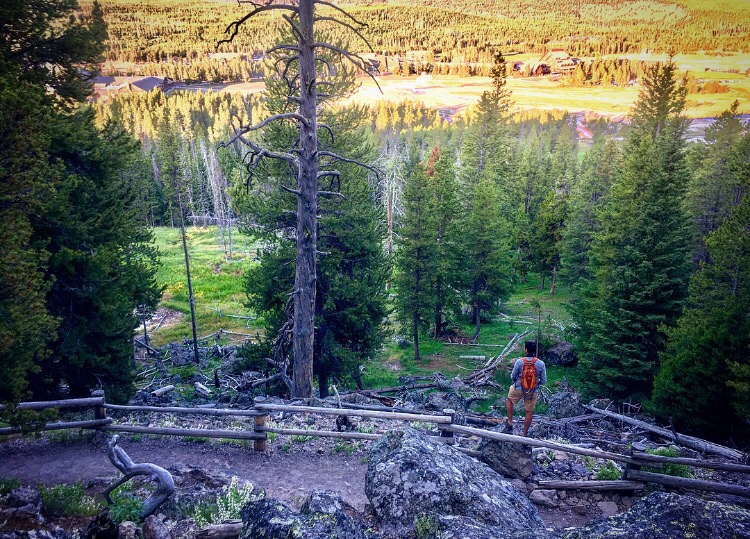








[…] to restart the challenge again several times after my indiscretion with nachos in Nashville, but trip after trip, one dinner party after another followed, and the regimen became increasingly hard to stick to. […]
[…] past the village, you’ll get to Lamar Valley. These are my favorite places in the park, and from my previous post, you can understand […]
[…] From Teton to Tongass, a Summer Spent Searching for Bears […]
[…] By now, you know about my obsession with bears. Since I hadn’t (really) seen a grizzly earlier in the summer during our trips to Yellowstone and Grand Teton, I figured in Alaska I had a much higher chance. But again, I was thinking about the photos I had seen of Katmai and Denali National Parks. Here in southeast Alaska, there are some coastal brown bears, but on the land excursions, spotting black bears is more common, except for some places like Admiralty Island, which has the world’s largest concentration of brown bears. […]
[…] From Teton to Tongass, A Summer Spent Searching for Bears […]
[…] Teton to Tongass: A Summer Spent Searching for Bears […]
[…] By now, you know about my obsession with bears. Since I hadn’t (really) seen a grizzly earlier in the summer during our trips to Yellowstone and Grand Teton, I figured in Alaska I had a much higher chance. But again, I was thinking about the photos I had seen of Katmai and Denali National Parks. Here in southeast Alaska, there are some coastal brown bears, but on the land excursions, spotting black bears is more common, except for some places like Admiralty Island, which has the largest concentration of brown bears in North America. […]
[…] of the main reasons I love to visit national parks is the thrill of looking for animals in their natural settings. The backup of cars due to wildlife viewing, or “wildlife jams” that often occur during the […]